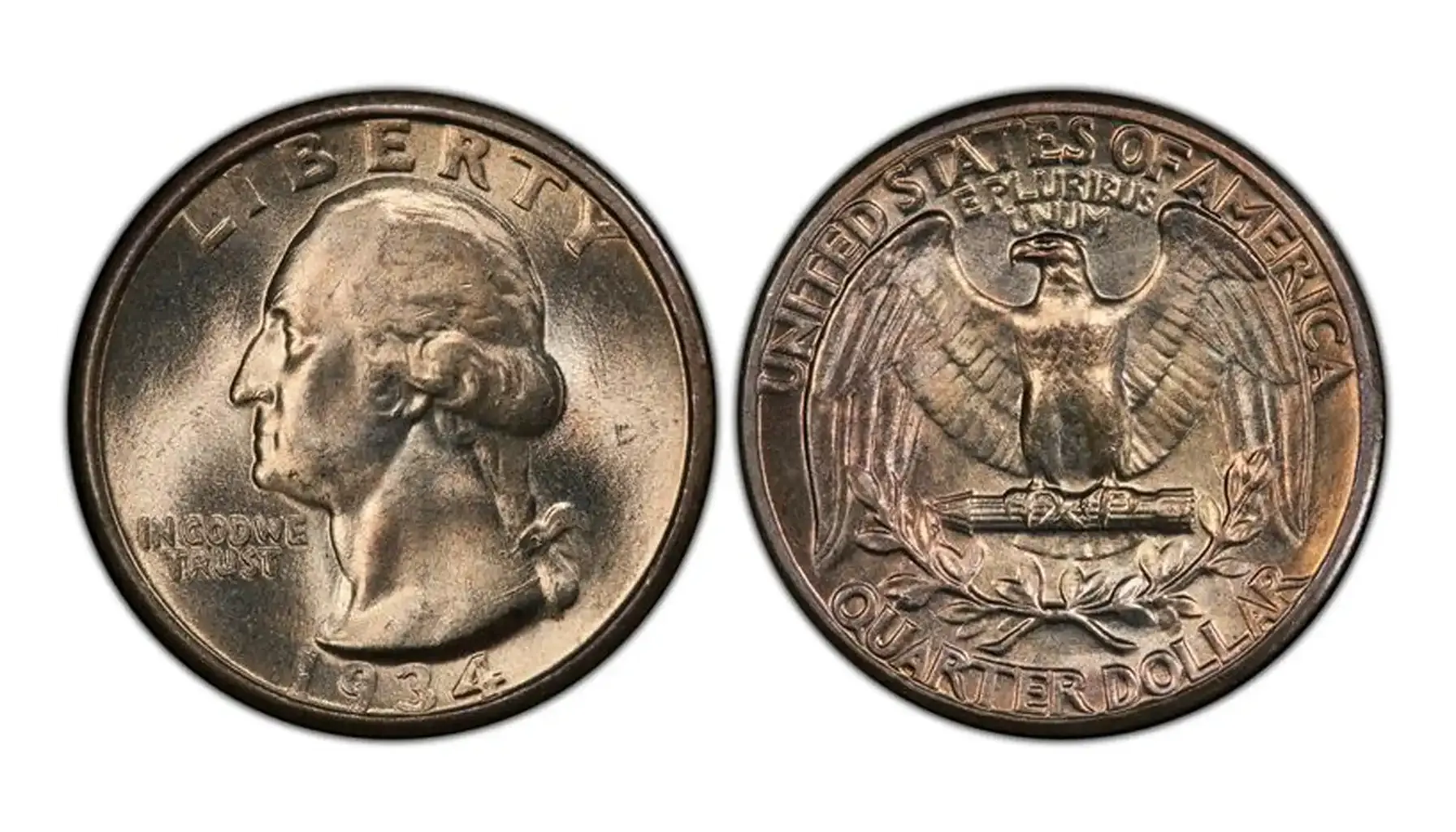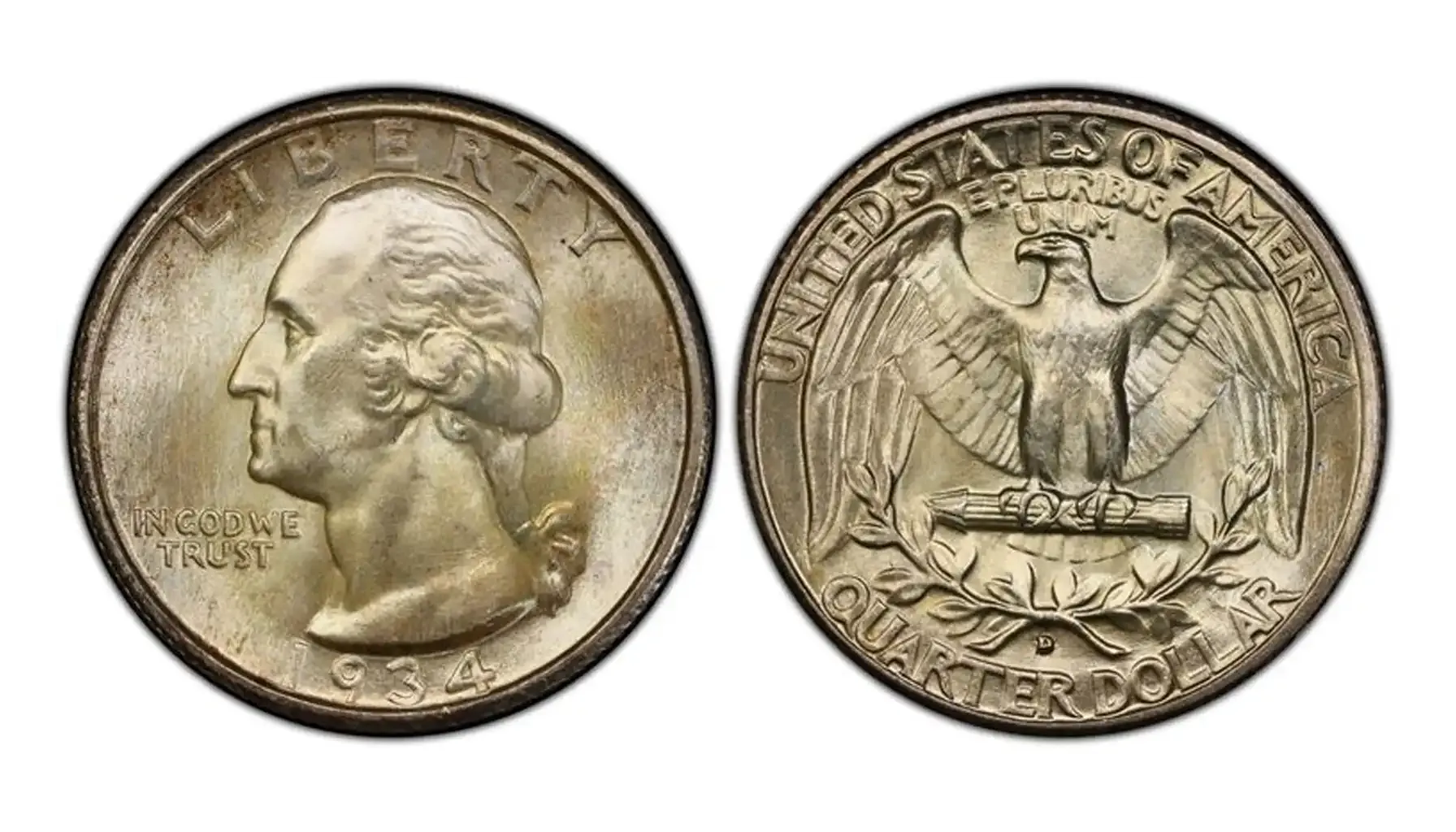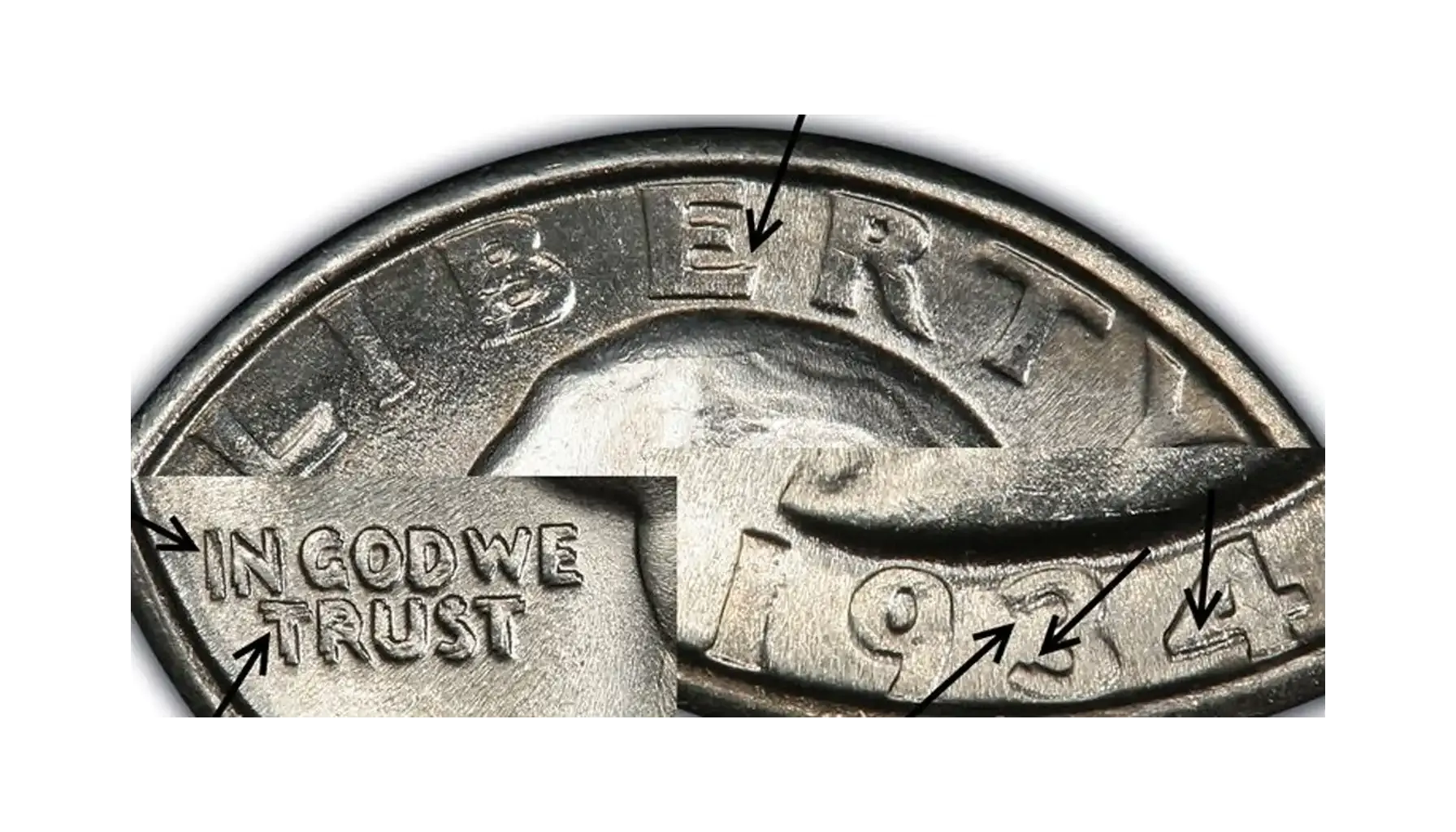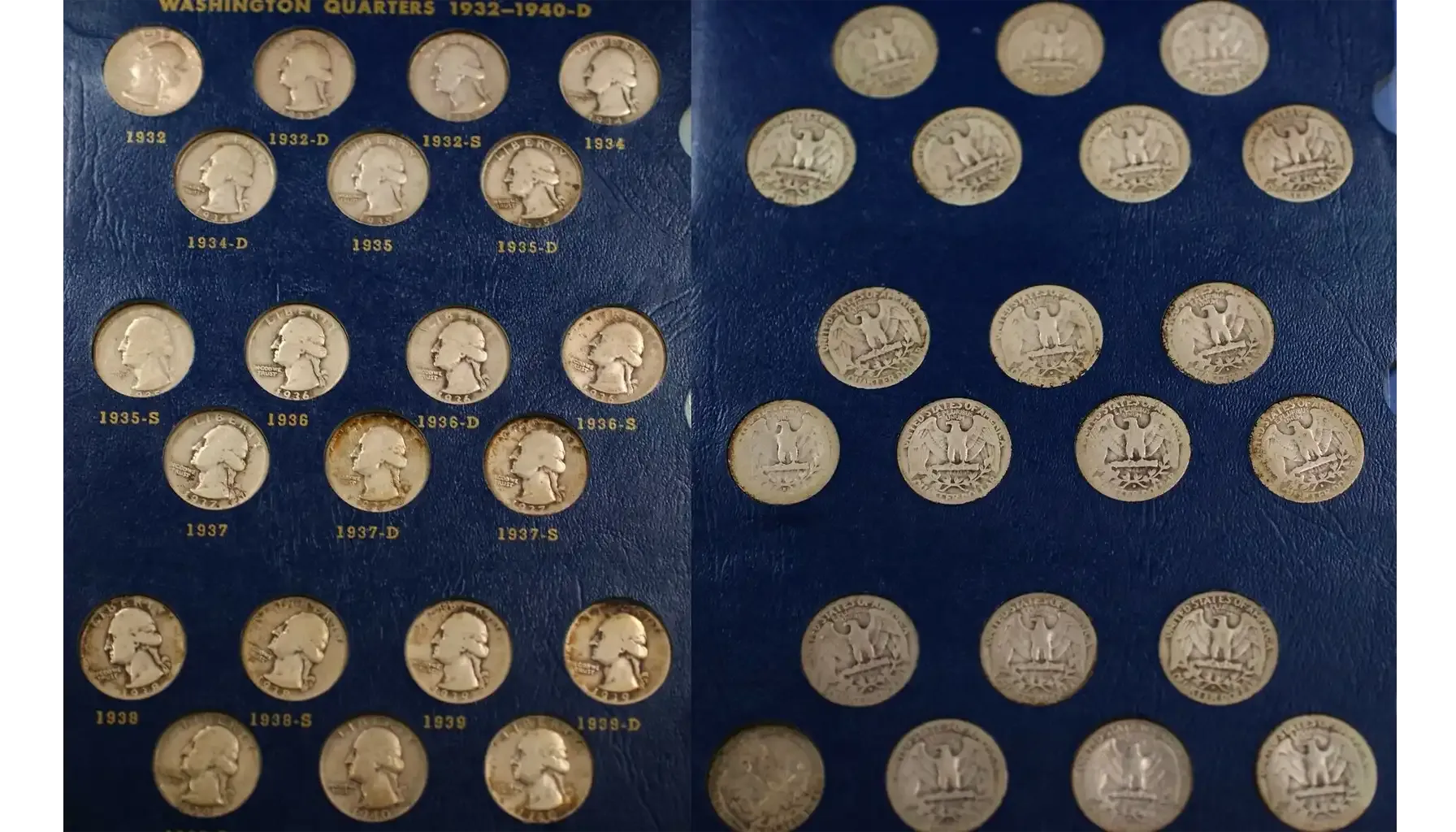Contents:
1934 Silver Quarter Value: Double Die Errors, and Collecting Insights
So what is a Washington Quarter anyway? It's that familiar quarter we've all seen, featuring good ol' George Washington on the front. But the 1934 version is special. Why? Because it's made of 90% silver, a fact that dramatically influences the 1934 quarter value today.
They were minted during a time when silver was a standard component of US currency, and that means even a worn 1934 quarter coin value is more than just 25 cents.
If you're not sure what you're looking at, an online coin identifier can be a great starting point to verify that you indeed have a Washington Quarter from 1934.

A Piece of History
1934 was a tough year, smack-dab in the middle of the Great Depression. Money was tight, and things were uncertain.
The fact that these quarters were made of silver during such a period lends them a particular weight – both literally and figuratively.
That history plays a role in how desirable they are to collectors today.
The Washington Quarter debuted in 1932 to commemorate the 200th anniversary of George Washington's birth. John Flanagan designed it, and it replaced the Standing Liberty Quarter. The design, with Washington on the obverse and an eagle on the reverse, became a symbol of American resilience.
So, why are collectors so interested in the 1934 versions?
Their age
Their silver content
The potential for finding rare varieties and errors
Plus owning a piece of history is just plain cool. And that’s where the question “is a 1934 quarter worth anything?” comes into play.
1934 Quarter Silver Content
These coins are 90% silver and 10% copper. This means that, even if the value of a 1934 quarter as a collectible is minimal, it still holds intrinsic worth due to the silver it contains.
So, how much is a 1934 silver quarter worth based on silver alone? That fluctuates with the market. When silver prices are high, the melt value of them increases. This is something to keep in mind because even a heavily circulated 1934 US quarter has this inherent silver backing.
What Is a 1934 Quarter Worth
Baseline | Generally, a circulated 1934 quarter in decent condition is worth more than face value because of its silver content. Keep an eye on silver spot prices to get an idea of its melt value. |
Condition | Uncirculated or nearly uncirculated examples are where the big money is. These are quarters 1934 that have seen little to no wear and retain their original luster. |
Rarity | A well-preserved 1934 double die quarter or even other types of errors will command top dollar. They even sell for up to $45,000. |

Mint Marks
The presence or absence of a mint mark significantly impacts the 1934 Washington quarter value. Mint marks indicate where it was struck.
1934 quarter value no mint mark
These were minted in Philadelphia. Generally, they are more common than the "D" versions. The 1934 quarter no mint mark value depends largely on its condition, but it's usually lower than the Denver version, all other things being equal.
1934 D Quarter
The "D" indicates that the coin was struck in Denver. The 1934 D quarter tends to be more sought after than the Philadelphia issue. This makes a good condition 1934-D quarter value noticeably higher than its counterpart without a mint mark.
1934 D Washington Quarter
This is just another way of referring to it minted in Denver. Nothing particularly different here, but collectors will definitely want to know what to look for. The key thing is to know what mint marks do to your coin.
Errors
Doubled Die Obverse (DDO) | A 1934 DDO quarter is one where the design elements on the front (obverse) of the coin appear to be doubled or blurred. This happens when the die used to strike the coin is improperly made. With a little studying, you can learn how to find errors in a collection. |
Identifying a DDO | Look closely at the lettering (especially "LIBERTY" and "IN GOD WE TRUST") and Washington's portrait. If you see a distinct doubling, you might have hit the jackpot. This makes a 1934 quarter error incredibly sought after. |

Where is the mint mark on a 1934 quarter? That's important too. If it seems misplaced or doubled, that can also be a sign of an error.
In 2025, these coins will just keep increasing in value. Now, let’s consider the 1934 liberty quarter. Many people use the terms “liberty coin” and “washington coin” interchangeably, but liberty is the old standing liberty coin that was made before 1932.
Market Prices
So you've got your 1934 quarter, maybe a few of 'em. The next question is, how much is a 1934 quarter worth on the open market right now? This isn't a fixed price; it's more like playing the stock market.
Checking Averages | Do some research. Look at recent sales on eBay, reputable coin auction sites, and even what your local coin shop is offering. That will give you a realistic idea of average market prices for a quarter in similar condition to yours. Also, the silver market has an impact on the 1934 quarter silver value. |
Fakes | There are some incredibly convincing fakes out there. Be super careful when buying online, and if a deal seems too good to be true, it probably is. Buy from reputable dealers, and if you're unsure, get a professional appraisal. It's better to spend a little money now to avoid a big disappointment later. So, learn how to spot fake coins and save your money. |
Tracking | In 2025, there are some great tools available for coin collecting. Cataloging apps or spreadsheets can help you record each coin's details, the date you acquired it, and what you paid. For example, Coin ID Scanner. This is super helpful for insurance purposes, tracking your collection's value over time, and even for passing it down to future generations. It's worth the effort to be organized. |

Pro Tips
Storage Solutions
How you store your coins matters big time. Avoid just tossing them in a box or leaving them exposed to the air. The best options are:
Coin Holders/Capsules: These are individual plastic cases that protect the coin from scratches, fingerprints, and environmental damage.
Coin Albums: Albums have slots specifically designed for coins, keeping them secure and organized.
Coin Storage Boxes
These boxes are lined with soft material and have dividers to keep your coins separated.
Choose archival-quality materials that are PVC-free. PVC can damage coins over time.
Cleaning
To Clean or Not to Clean? This is a huge debate in the coin collecting world. Generally, don't clean your coins. Cleaning can actually decrease their value by leaving tiny scratches or altering the surface.
The only exception might be if there's loose dirt or debris. If you absolutely have to clean, use distilled water and a very soft brush, and be extremely gentle or just find on the Internet a detailed safety cleaning guide for coins.



